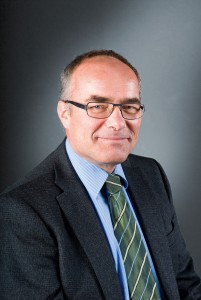
(Chief Editor Mining Report Glückauf)
Editorial
The main focus of this issue of Mining Report Glückauf is once again on the legacy that the mining industry is leaving behind when it finally closes, and how this can be dealt with in a responsible way.
When a mine is closed the production phase will be followed by the decommissioning phase, when the mine is cleared of its equipment and the shafts are filled in. Only then can the post-mining era really begin. For the companies involved this step into the post-mining world will bring major, fundamental changes. Accepting permanent and sustainable responsibility for the legacies of the mining industry will therefore mean helping the affected businesses to accept a new set of structures that are adapted to meet the challenges of the future. This applies both to the company -organisation as well as to the introduction of appropriate risk-management and monitoring systems.
More than two years before the scheduled termination of all coal mining in Germany RAG Aktiengesellschaft in Herne took further steps towards its planned reorganisation as an “eternity company” by setting up its new Post-Mining Department and introducing an appropriate monitoring programme. For some 40 years now the RAG subsidiary Montan Immobilien GmbH (RAG MI), Essen, which is also involved in urban development schemes, has been playing an active role in helping to shape structural change in the North Rhine-Westphalia and Saarland coalfields. Our interview with Prof. Noll, Chairman of the Board of Directors of RAG MI, gives him an opportunity to present some examples of the company’s successful development portfolio.
Experience in dealing with the legacies of the mining industry also extends to include the old mining regions of the former German Democratic Republic. Two examples are discussed here: the preservation measures being applied in the old potash workings in the South Harz Mining Region and at the former Königstein uranium ore mine. This theme is rounded off with various papers on subjects such as the ongoing development of monitoring systems for displaying the impact of mining activities, the influence of modern opencast mine planning procedures and the process used for selecting suitable pumping equipment for filling mining-related voids and cavities.
While Germany may be withdrawing from the use of nuclear energy, elsewhere – and this includes Europe – nuclear power stations will continue to operate and indeed new plants are even being constructed. Reason enough for us to examine supply security as it affects that vital energy resource uranium.
As usual we also feature a section on ISSA Mining and its industrial health and safety remit. This time we are looking at accident trends and prevention measures in the Polish hard coal mining industry.
With my best regards
Dipl.-Ing. Andreas-Peter Sitte
Chief Editor Mining Report Glückauf, Herne